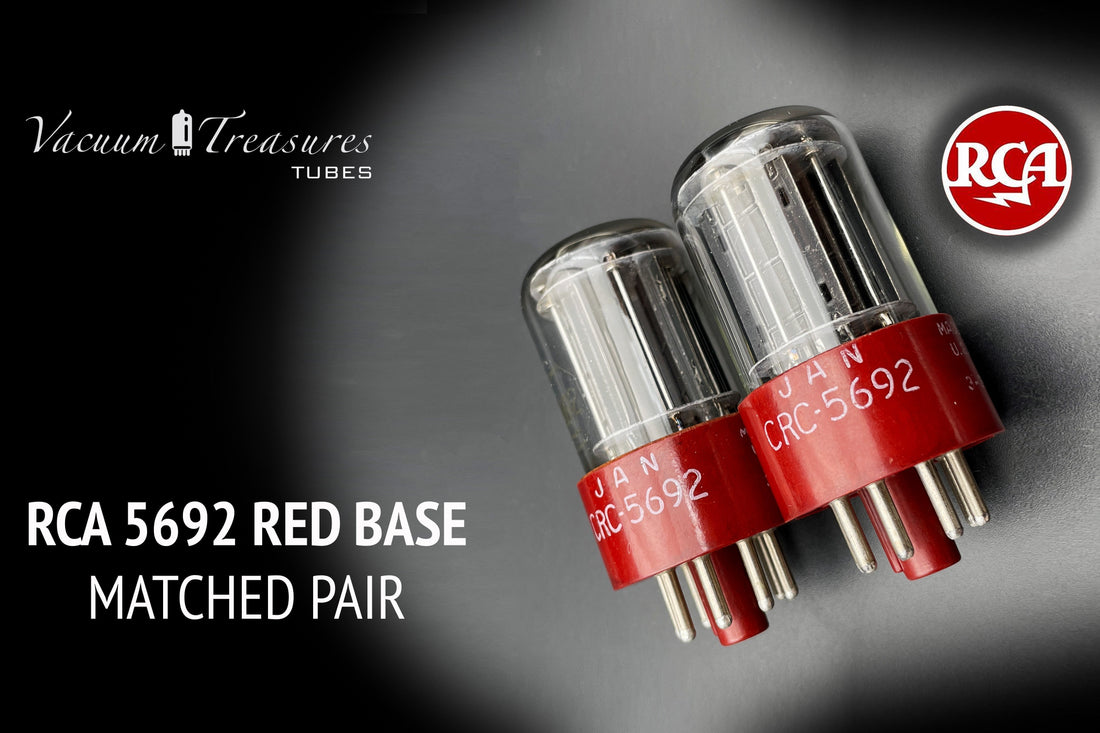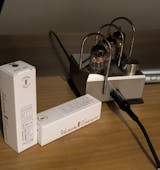
America, Land of Tubes — A Sound That Still Resonates
Share
There was a time when anything seemed possible.
A time when American industry didn't just produce objects, but icons .
Steel, glass, copper. And inside, a pulsating heart of electrons.
American vacuum tubes are not just components: they are the voice of an era , the backbone of a dream called sound.
Glass, steel and copper. But also the smell of a workshop, dim lights, the vibration of a test bench in the middle of the night.
Anyone who has listened to a Fender guitar from the 60s, or a hi-fi system with RCA amplifiers, has already encountered that tone: warm, decisive, full of personality .
A sound that doesn't ask permission. A sound that sings America .
He hears the notes of a Fender Twin Reverb turned on in the rehearsal room in '68. It's the sound of an era that never went away.
In the golden age of American electronics, some names became legends.
RCA , with its Red Base and coast to coast radio broadcasts.
Sylvania , pioneer of lighting and materials research.
Tung-Sol , loved by generations of guitarists for its raw, powerful sound.
General Electric , an industrial giant, with reliable and refined valves.
Raytheon , synonymous with military precision and manufacturing rigor.
But the real beating heart was the entire American industrial system, capable of transforming innovation into culture.
Western Electric , with its rigorous standards for telecommunications.
Bell Labs , where the future was born between research and vision.
Collins Radio , the absolute reference in military radio communication.
Heathkit , which has made generations of hobbyists fall in love.
Dynaco , with its affordable and powerful hi-fi kits.
Fender , who sculpted rock with their tube guitars and amplifiers.
Ampex , pioneer of analog recording.
They weren't just brands: they were institutions . Factories that provided jobs, identity, vision.
Each with its own sound style, its own aesthetic signature, its own philosophy.
And all united by a common goal: to build valves and instruments that were the best of the best .
And then there were them.
Musicians. The saints of sound.
Those who turned on the valves and turned on the world.
Louis Armstrong , with his divine breath and his trumpet passing through the RCA microphones.
Miles Davis , who experimented and set amplifiers and conventions ablaze.
Elvis Presley , singing live on the radio at RCA studios, with the reverb from the tubes still warm.
Jimi Hendrix , who made the transformers of his Marshalls scream with American tubes inside.
Johnny Cash , with his dark voice filling Ampex tape recorders and tube microphones.
Aretha Franklin , who made the tubes cry with a single note.
Frank Zappa , who dissected the sound, valve by valve, like a surgeon of the soul.

Every valve tells a story.
Jimi Hendrix on stage – when an American valve screamed under his fingers.
Or the roar of a Stratocaster, amplified by an American heart.
All different, all united by one thing: the analog sound of America .
The one made of warm imperfections, rich harmonics, lively energy.
What we still look for today, in every American valve we test, listen to, rediscover.
Because an American valve isn't just a pipe: it's a symbol.
It's a promise kept.
It's a piece of America that keeps on playing.
After having told the story and the charm of American tubes, we want to share a deeper reflection — born every day from our work with customers, systems, and real listening.
Price, Availability and Quality Perception
In Europe, there is still a tendency to identify the value of a valve with its price.
The more it costs, the better it sounds: this is the implicit equation that many take for granted.
But the reality is more nuanced.
The price of a valve often reflects its availability, rather than its intrinsic quality.
Some valves are rarer because they were produced in limited quantities, or because they are sought after by collectors and parallel markets.
Others, like many American valves, were produced in huge volumes for industry, for the military, for radio...
Yet, they are built to exacting standards , often higher than today's, and have stood the test of time with impressive dignity .
The risk is that they are considered “economical” just because they are more accessible .
But an experienced listener knows that the price doesn't tell the whole story.
What matters is how it sounds, how it integrates, how it returns the music to the real system.
A compact formation of Radiotron UX-201-A. In their shadows, the echo of an industrial culture that built to last. To play. To stay.
The Silent Advantage of American Valves
What is striking about American valves is not only their reliability or the robustness of their design.
It is their discreet but present sound personality , capable of conveying warmth, body and naturalness without excess.
They don't scream to be noticed. But they sound like they've always belonged to the plant .
And this — especially in a world where everything seems to be becoming brilliant, detailed, hyper-analytical — is often what is missing.
A carefully matched and tested Sylvania, RCA, or GE can often outperform more “prestigious” names — simply because it resonates better in your setup.
Rediscover without prejudice
It's not about establishing hierarchies.
We are not saying that American tubes “sound better” in absolute terms.
But we want to remember that many of them deserve to be listened to again carefully , regardless of their fame or price.
Because in the end, in the world of valves, true luxury is not owning a famous name.
It's finding the right tube , that in your system, in your music, in your sensibility, simply sounds good .
A Reflection on the Context
We told the American sound, its history, its voice.
But there is a truth that every enthusiast knows — and that is worth more than any technical sheet:
There is no perfect valve. There is only one right valve.
A tube may appear neutral, or even anonymous, if inserted into the wrong circuit.
And then reveal itself to be surprising, exciting, alive... in the right context .
Many American valves were overlooked in Europe not because they lacked quality,
but because they have rarely been heard in the ideal conditions to make them shine .
That's why we don’t just sell tubes. We offer possibilities worth listening to.
The chance to discover that an RCA can breathe new life into a European preamplifier .
That a Sylvania can restore musicality to a system that is too analytical .
That a tube that costs less than others can sound better in your system .
The heart of the matter, then, is that no one can tell you which valve to choose. You have to try.
When the right tube meets the right context, something truly special happens — and it stays with you.



